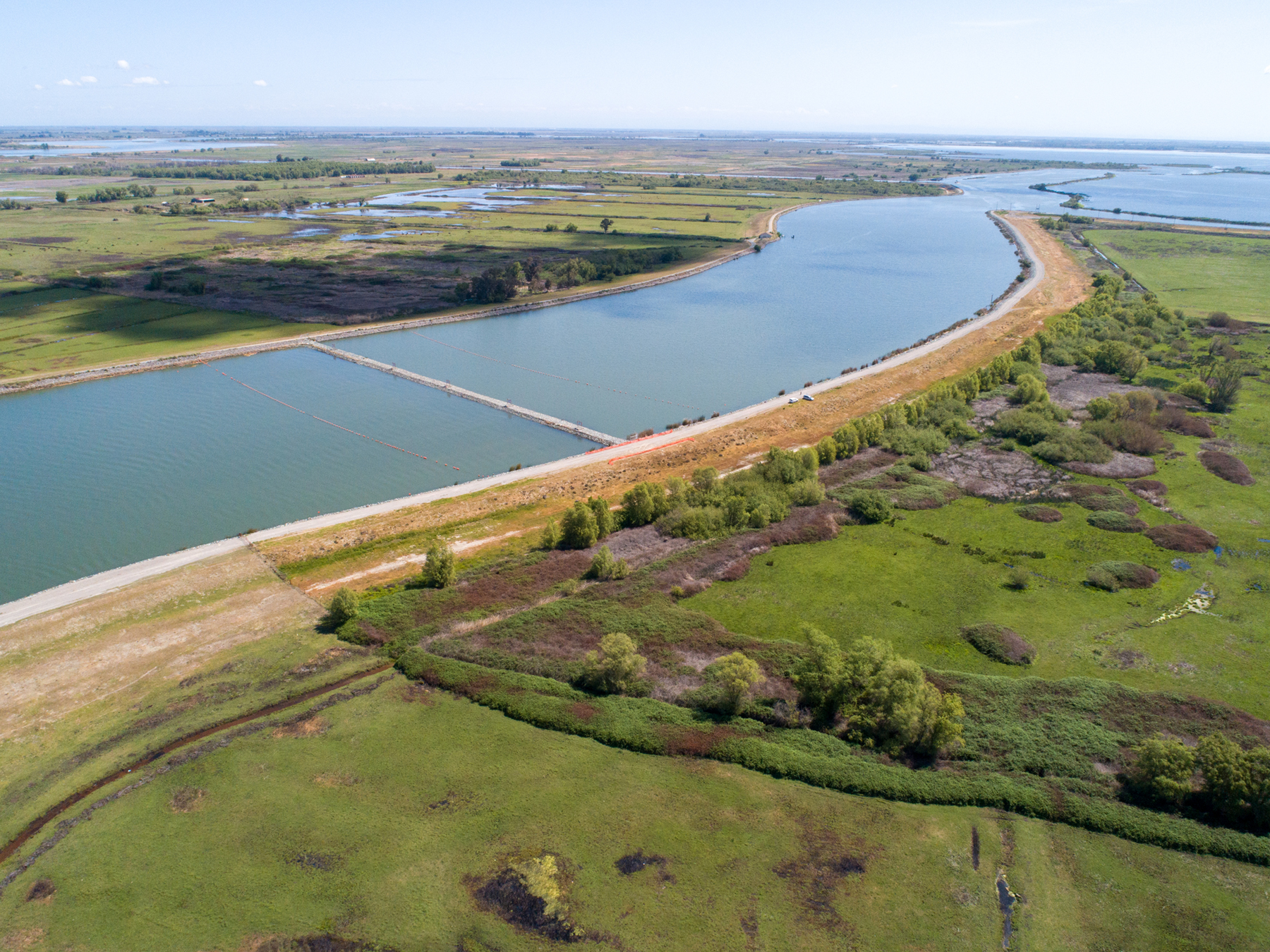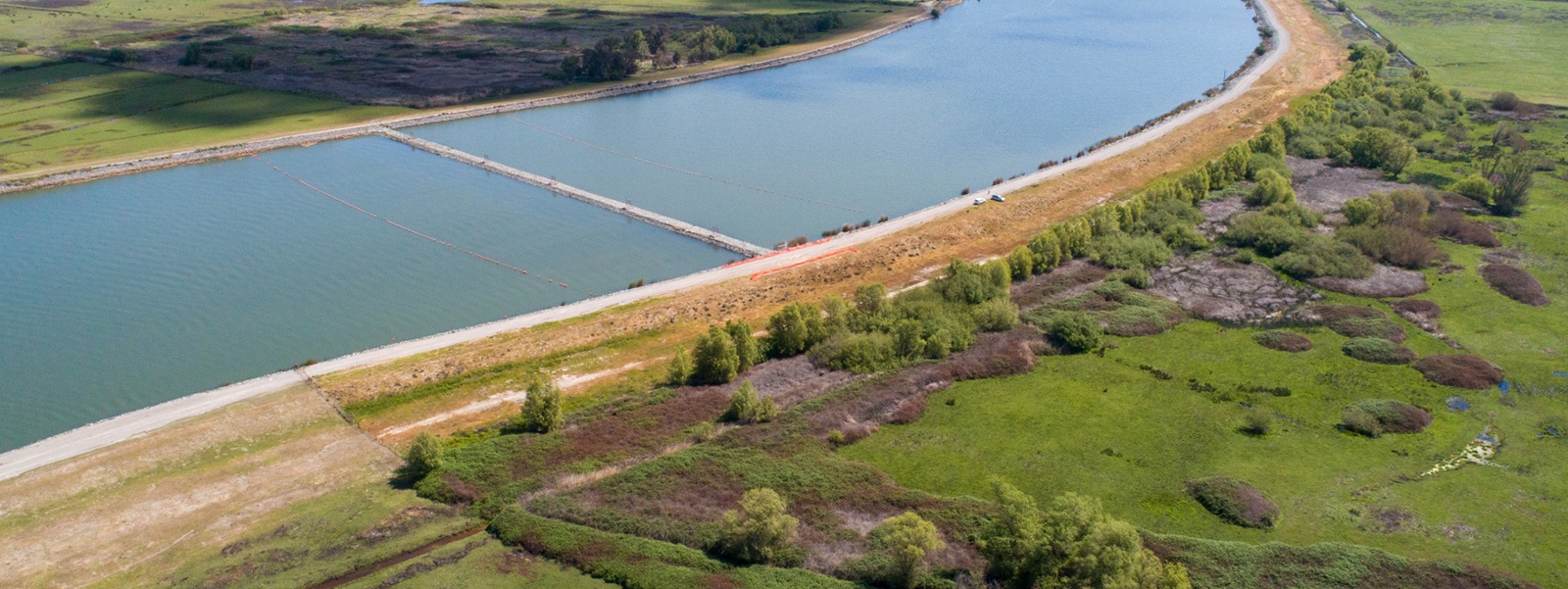State water board seeks comments on Bay-Delta plan

The Emergency Drought Salinity Barrier on the West False River near Oakley in the Sacramento-San Joaquin Delta in Contra Costa County. The 750-foot-wide rock barrier is in place to help deter the tidal push of saltwater from the San Francisco Bay into the central Delta.
Photo/Florence Low/California Department of Water Resources

By Christine Souza
California water officials are taking another step forward as part of a broader process to improve conditions for struggling fish populations in the San Francisco Bay and the Sacramento–San Joaquin Delta and its tributaries.
Last week, the California State Water Resources Control Board announced draft updates for the Sacramento River and Delta phase of the state’s water quality control plan, known as the Bay-Delta plan.
Thad Bettner, executive director of the Sacramento River Settlement Contractors, a group that holds contracts with the U.S. Bureau of Reclamation to divert water from the Sacramento River, said the draft updates mark the beginning of the implementation process, which he said “could have significant impacts on agriculture and the environment.”
State law requires the state water board to adopt and periodically review water quality control plans for all surface waters. The draft updates released last week are the second phase of the Bay-Delta plan and follow the 2018 board adoption of new flow objectives for the protection of fish in the lower San Joaquin River tributaries—the Stanislaus, Tuolumne and Merced rivers.
Draft updates under consideration for the Sacramento River tributaries include a regulatory pathway alternative by staff that proposes 45% to 65% of unimpaired flows and other measures to support fish. The pathway sets year-round inflow and outflow requirements, proposes new measures to preserve cold-water habitat for salmon and steelhead, drought protection requirements, and monitoring and reporting provisions.
As an alternative, the board is considering incorporating voluntary agreements, which propose flow and nonflow measures to protect fish populations. Known as Healthy Rivers and Landscapes, the proposal submitted by water agencies and supported by Gov. Gavin Newsom aims to double salmon populations by 2050.
“The Healthy Rivers alternative is the best path forward for California,” said David Guy, president of the Northern California Water Association, which represents water suppliers and local governments in the Sacramento Valley. “It is more implementable and will be so much more effective for fish and wildlife and will not be devastating to the whole entire state.”
Guy added that the voluntary agreements align with Newsom’s water priorities, including building Sites Reservoir and the Delta Conveyance Project.
“The state water board (regulatory pathway) proposal would undermine every one of the administration’s (water) priorities that the governor has talked about over the last two to three years,” he said. “We just need to make sure that the Healthy Rivers program meets the requirements for a water quality control plan update and that we have a strong program going forward with some regulatory relief to it if this doesn’t happen.”
The voluntary agreements propose an initial eight-year term. If approved by the board and shown to be effective, the term could be extended or modified. If the proposed voluntary agreements are not found to be effective, a regulatory pathway could apply. For parties and tributaries without voluntary agreements, the regulatory pathway would apply under the proposal.
The draft updates to the Bay-Delta plan include options based on alternatives described in a staff report to the board last fall.
The board has not yet decided on how to move forward with draft updates for the Sacramento River and Delta and seeks public input during a series of workshops.
“With the release of these possible updates to the Sacramento (River and) Delta portions of the plan, the board would like to hear significant public input, which will be carefully considered as we work toward a comprehensive update that provides for the reasonable protection of beneficial uses of water in the watershed,” said Eric Oppenheimer, executive director of the state water board.
The Sacramento River Settlement Contractors are still digesting draft updates to the plan, Bettner said. He added that farmers, conservation groups and other stakeholders must actively engage in the regulatory process, as updates could lead to considerable adjustments in water availability for agricultural use.
“The difficulty is, given that there is still are a lot of options in terms of what the board may ultimately decide, it is hard to analyze what those effects would be,” Bettner said.
The Bay-Delta watershed, which includes the Sacramento and San Joaquin River systems, is the hub of the state’s water supply network. The river systems, including their tributaries, drain water from about 40% of the state’s land area, supporting a variety of beneficial uses. The rivers and the delta provide a portion of the water supply for two-thirds of Californians and millions of acres of farmland.
Public comments on the draft updates for the Sacramento River and Delta portion of the Bay-Delta plan are due Dec. 19. The mid-December comment deadline, Bettner said, doesn’t provide stakeholders a lot of time to analyze the draft updates and prepare comments.
“They’ve kind of painted us into a corner,” he said. “We’re pretty much seeing the updates for the first time and having to review it and digest it and understand what it means.”
More information about the Bay-Delta plan and implementation processes is available at www.waterboards.ca.gov/waterrights/water_issues/programs/bay_delta/comp_review.html.
(Christine Souza is an assistant editor of Ag Alert. She may be contacted at csouza@cfbf.com.)




